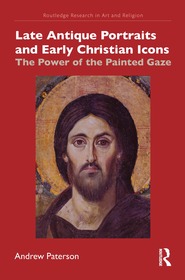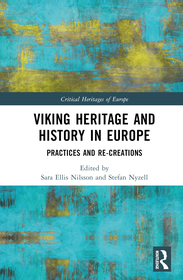
Late Antique Portraits and Early Christian Icons
The Power of the Painted Gaze
Series: Routledge Research in Art and Religion;
- Publisher's listprice GBP 39.99
-
19 105 Ft (18 195 Ft + 5% VAT)
The price is estimated because at the time of ordering we do not know what conversion rates will apply to HUF / product currency when the book arrives. In case HUF is weaker, the price increases slightly, in case HUF is stronger, the price goes lower slightly.
- Discount 20% (cc. 3 821 Ft off)
- Discounted price 15 284 Ft (14 556 Ft + 5% VAT)
Subcribe now and take benefit of a favourable price.
Subscribe
19 105 Ft

Availability
Estimated delivery time: In stock at the publisher, but not at Prospero's office. Delivery time approx. 3-5 weeks.
Not in stock at Prospero.
Why don't you give exact delivery time?
Delivery time is estimated on our previous experiences. We give estimations only, because we order from outside Hungary, and the delivery time mainly depends on how quickly the publisher supplies the book. Faster or slower deliveries both happen, but we do our best to supply as quickly as possible.
Product details:
- Edition number 1
- Publisher Routledge
- Date of Publication 27 May 2024
- ISBN 9780367697587
- Binding Paperback
- No. of pages228 pages
- Size 246x174 mm
- Weight 680 g
- Language English
- Illustrations 61 Illustrations, black & white; 10 Illustrations, color; 61 Halftones, black & white; 10 Halftones, color 565
Categories
Short description:
This book focuses on the earliest surviving Christian icons, dated to the sixth and seventh centuries, which resemble three other well-established genres of ‘sacred portrait’ also produced during late antiquity, namely Roman imperial portraiture, Greco-Egyptian funerary portraiture and panel-paintings depicting non-Christian deities.
MoreLong description:
This book focuses on the earliest surviving Christian icons, dated to the sixth and seventh centuries, which bear many resemblances to three other well-established genres of ‘sacred portrait’ also produced during late antiquity, namely Roman imperial portraiture, Graeco-Egyptian funerary portraiture and panel paintings depicting non-Christian deities.
Andrew Paterson addresses two fundamental questions about devotional portraiture – both Christian and non-Christian – in the late antique period. Firstly, how did artists visualise and construct these images of divine or sanctified figures? And secondly, how did their intended viewers look at, respond to, and even interact with these images? Paterson argues that a key factor of many of these portrait images is the emphasis given to the depicted gaze, which invites an intensified form of personal encounter with the portrait’s subject.
The book will be of interest to scholars working in art history, theology, religion and classical studies.
MoreTable of Contents:
Introduction 1. The Production of Sacred Portraits (i): Techniques and Stylistic Variation 2. The Production of Sacred Portraits (ii): The Visualisation of the Prototype 3. The Reception of Sacred Portraits (i): Functions and Meanings of the Depicted Gaze 4. The Reception of Sacred Portraits (ii): Their Role in Spiritual Practice Conclusion
More





